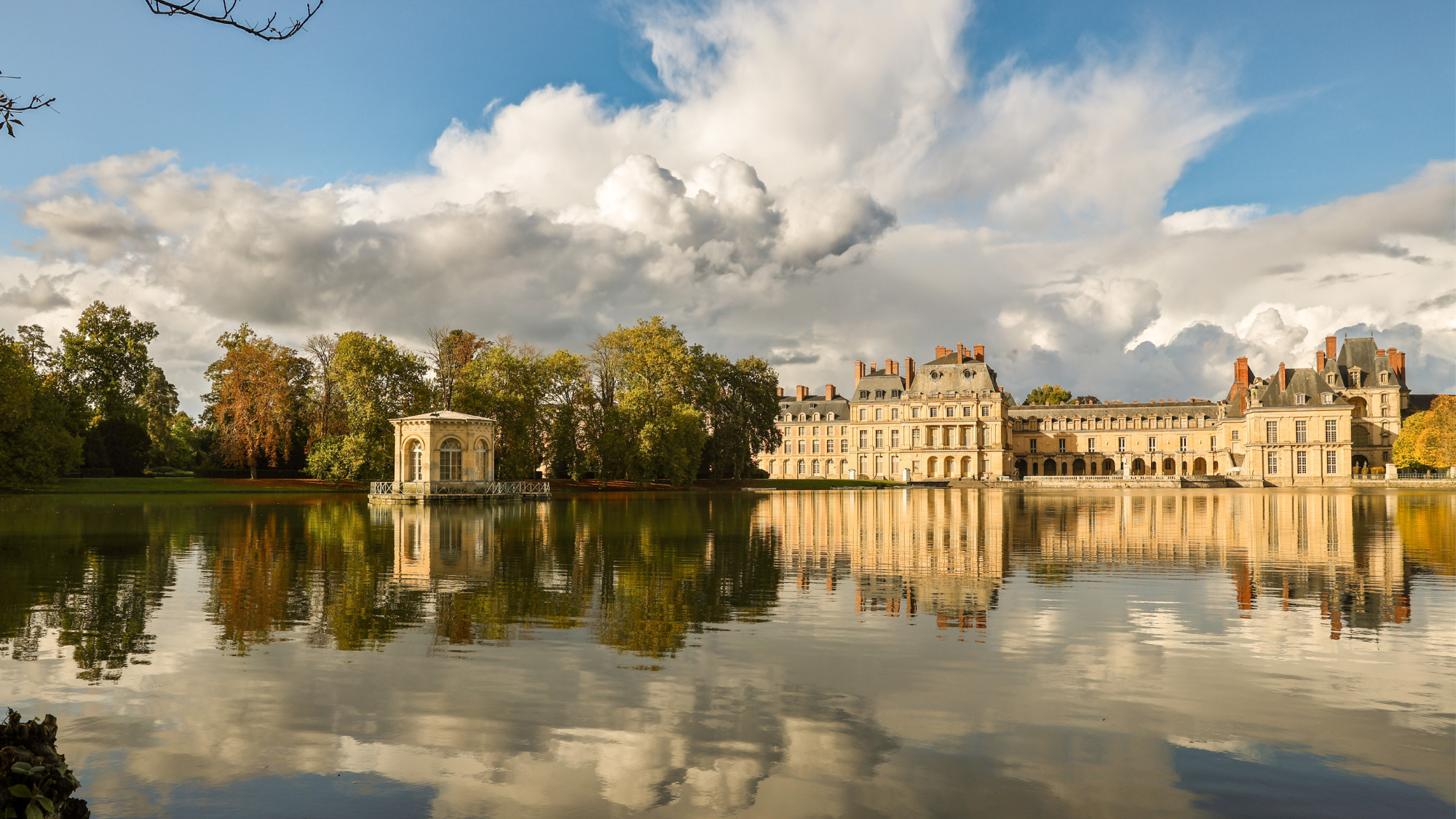Are artists the secret to revitalizing Main Street?
Part of our series on the future of Main Street

The long, imposing brick buildings of the Alexander Smith Carpet Mills are a local icon in Yonkers, New York, sitting alongside the Saw Mill River as it winds its way into the Hudson north of New York City.
The Smith Mills, impossible to miss dominating their block, remain a fixture even in a city which can claim other industrial innovations like the Otis elevator and early Bakelite plastic. But beyond their brick fronts, they also stand as constant reminders of the city's industrial past, as well as just how much that industry has changed.
In 1894, only 20 years after Alexander Smith opened his first mill building, The New York Times said "the sweetest music that has been heard in this city" was "the music of the looms" as they ran at the mills. By 1954, though, the Yonkers factory had shuttered, a victim of a changing market, cost-cutting, and greener pastures down south. Other Yonkers-based firms followed suit, liquidating or moving elsewhere in search of lower costs.
The Week
Escape your echo chamber. Get the facts behind the news, plus analysis from multiple perspectives.

Sign up for The Week's Free Newsletters
From our morning news briefing to a weekly Good News Newsletter, get the best of The Week delivered directly to your inbox.
From our morning news briefing to a weekly Good News Newsletter, get the best of The Week delivered directly to your inbox.
By the time Harlan Rose and his father arrived in the 1980s, the mill buildings had been barely used for 20 years. Their move to the mill was purely practical, at first — they needed warehouse space for their growing Asian antiquities business. But they liked the place, and they thought others might, too. In 2000, they bought one of the mill buildings.
"It was a good luck building to us," Rose said.
Rather than fill the empty factory floors with light industry, they had a different goal. They wanted the space to be turned over to something new, something that would draw attention to the old mills and to Yonkers, too. Rose calls their solution a "creative building."
Today, they have more than 30 tenants, and Rose estimates 90 percent are "creative businesses" — artists, photographers, theater production companies, even a costume designer with more than 20,000 square feet of Broadway outfits. Neighboring buildings house even more — he estimates there are 60 artists working in the mill building next door.
A free daily email with the biggest news stories of the day – and the best features from TheWeek.com
So, this year, Rose and his fellow owners plan to unveil the Carpet Mills Arts District, a destination which many cities use to set aside a neighborhood for primarily arts-based industries.
In doing so, they are tapping into a concept which has existed for decades but which more and more cities are turning to in hopes of restarting economic engines in sometimes forgotten neighborhoods and downtowns.
Rose looks at the explosive growth of neighborhoods in Brooklyn and southern Manhattan, many of which first attracted new residents by appealing to artists, designers, and other creatives. He says Yonkers could use the same appeal.
"If the city really wants to have a resurrection, which it certainly does, artists are the first people in," he said. "Just look at the Lower East Side, look at Brooklyn, artists were there first."
And resurrection is exactly what many small and mid-sized American towns and cities have been seeking.
As companies — especially big manufacturers — downsized, relocated, or merged in the 1950s and 60s, many American cities felt the effects, hard. When industry departed, city leaders were left rushing to fill the void, to find jobs for their residents and to stabilize their finances.
During that era, planners frequently focused their attention on a city's downtown core — their proverbial main street — which had often been hollowed out as residents lost jobs and cut back on spending, said Amanda Johnson Ashley, a professor of community planning at Boise State University who studies the economics of arts.
With industry fleeing, city officials turned to other sources of revenue, including drawing visitors back to their city centers.
"They were looking to build a tourism economy, a replacement economy for what downtowns or other parts of the city had been losing," she said. Many city planners looked to the prominent example of Manhattan's Lincoln Center, the arts complex built as part of an urban renewal program in the 1960s, as the gold standard for what arts could bring to a city.
But in the last decade, cities have begun turning to artists themselves to stimulate struggling neighborhoods, Ashley said. Individual artists and community-based non-profits are increasingly creating environments geared towards creative professionals, not just visitors.
And cities are encouraging the development of formal 'districts' through tax incentives or business improvement programs, she said.
"It's not just tourism anymore," Ashley said. "They are interested in community development and artist incubation. And it's not just downtowns, but in the urban fringe and suburbs, also."
Even the definition of an arts district has evolved. Where prominent, bricks-and-mortar projects like Lincoln Center once defined a city's relationship to the arts, increasingly arts districts are becoming as diverse as the cities they represent. The Gordon Square Arts District in Cleveland — which the National Endowment for the Arts has called one of the most successful in the country — is anchored by three performing arts theaters, while Pittsburgh's Mattress Factory supports a network of artist housing in surrounding neighborhoods. Even casino-centric Reno, Nevada now features an arts district, where kinetic sculptures dance on the streetlights.
In some states, the economics of arts districts have had a measurable impact on city bottom lines. In Maryland, one of the states which first used an official arts district label, the impact remains "relatively moderate" but "durable" over time, according to Daraius Irani, a Towson University economist who studied the impact statewide. Arts districts in Maryland accounted for more than $36 million tax revenues for the state in 2013, as well as jobs for more than 5,000 residents, his analysis said.
For smaller cities and towns, a well-managed arts district could be as lucrative as their traditional main street, Irani said, and could incorporate businesses not traditionally linked to the arts — such as craft spirits — that nonetheless qualify as creative.
"It's an opportunity to re-think main streets and places that have lost some of their vitality," he said. "Art is really as we define it."
But change — which often fuels art itself — is also a factor in these districts. Districts can have different goals depending upon their location — some geared towards supporting professional artists, others to growing jobs and creative businesses, still others towards trying to keep neighborhoods together.
For that reason, Ashley says, it can be hard to definitively measure what a "successful" arts district looks like.
"Success is a really tricky concept. There are many different versions of success," many of which can't be measured through traditional economic indicators, she said.
Perhaps the strongest argument in favor of arts districts is that they are still being used. Local governments invested more than $770 million in the arts — including designated districts — in 2014, a 7 percent increase from the prior year and a gradual rebuilding from sharp drop-offs during earlier recession years, according to data from Americans for the Arts, an advocacy and research group.
Harlan Rose hopes Yonkers' art economy can benefit from increased investment and attention, as well.
"Right now, high-end designers from New York City are intimidated coming up to Yonkers," he said. "But we can make this a destination point."
They are already planning their first signs.
Matt Hansen has written and edited for a series of online magazines, newspapers, and major marketing campaigns. He is currently active in press freedom and safety research with Global Journalist Security.
-
 ‘It’s hard not to feel for the distillers’
‘It’s hard not to feel for the distillers’Instant Opinion Opinion, comment and editorials of the day
-
 A long weekend in Fontainebleau
A long weekend in FontainebleauThe Week Recommends Less than an hour from Paris, this historic town is perfect for a short break
-
 Political cartoons for December 16
Political cartoons for December 16Cartoons Tuesday’s editorial cartoons include calibrating fonts, Christmas classics, and more